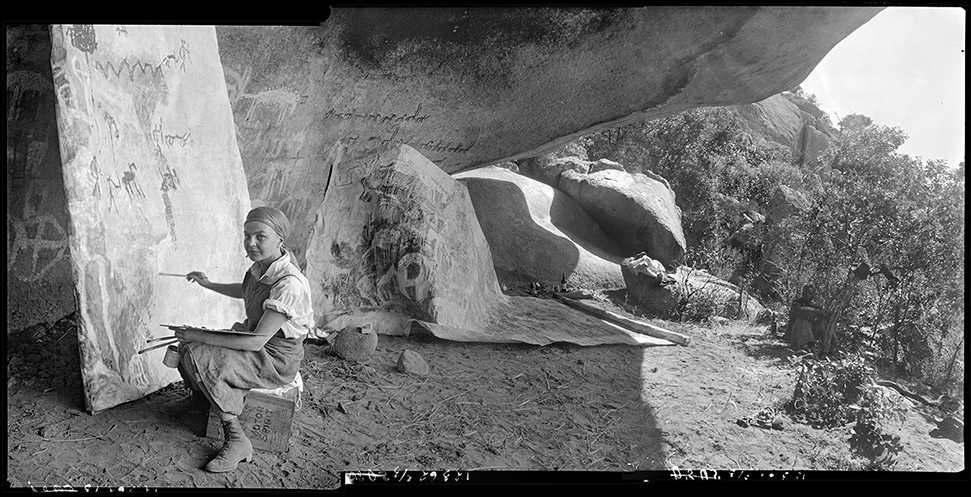Exposer l’art rupestre
Du terrain africain aux métropoles
Identifier (Artikel)
Abstract
Often located in places difficult to access – caves, rock shelters, and deserts – prehistoric paintings and engravings were first generally known to the wider public in the 1930s through reproductions presented in publications and exhibitions in major European and American cities. The German anthropologist Leo Frobenius (1873–1938) played a decisive role in this diffusion by creating the world’s largest collection of prehistoric art facsimiles: about 5,000 so-called “original” copies faithfully reproducing the size, shapes, and colors of the paintings. The copies were made throughout the world primarily by professionally trained young women artists who accompanied Frobenius on his expeditions. These watercolors brought these rarely seen and distant images into the larger world. In numerous exhibitions, rock art – converted into two dimensions, in rectangular form, and hangable on a wall – was presented to the public like recognized masterpieces. This article explores the history of the collection and today’s exhibition concepts.
Statistiken


Lizenz

Dieses Werk steht unter der Lizenz Creative Commons Namensnennung - Nicht-kommerziell - Keine Bearbeitungen 4.0 International.


